This is the second part of a three-part series covering common questions we receive in our engineering department. Part 1 consisted of frequently asked questions related to our anchor products (view Part 1 here). These are questions that come directly into our call center, questions submitted through the website, submitted through our engineering email queues, or through our sales team.
In part 2 of this series, I’ll be covering connector questions on everything from holdowns to joist hangers. Most of the answers to these questions can be found in our connector catalog.
Let’s start with the most common connector question we receive, which is:
“Does a holdown have to sit directly on the sill plate?”
Per our specification on p. 50 of our C-C-2021 connector catalog, a holdown can bear directly on a mudsill or be raised as much as 18”.
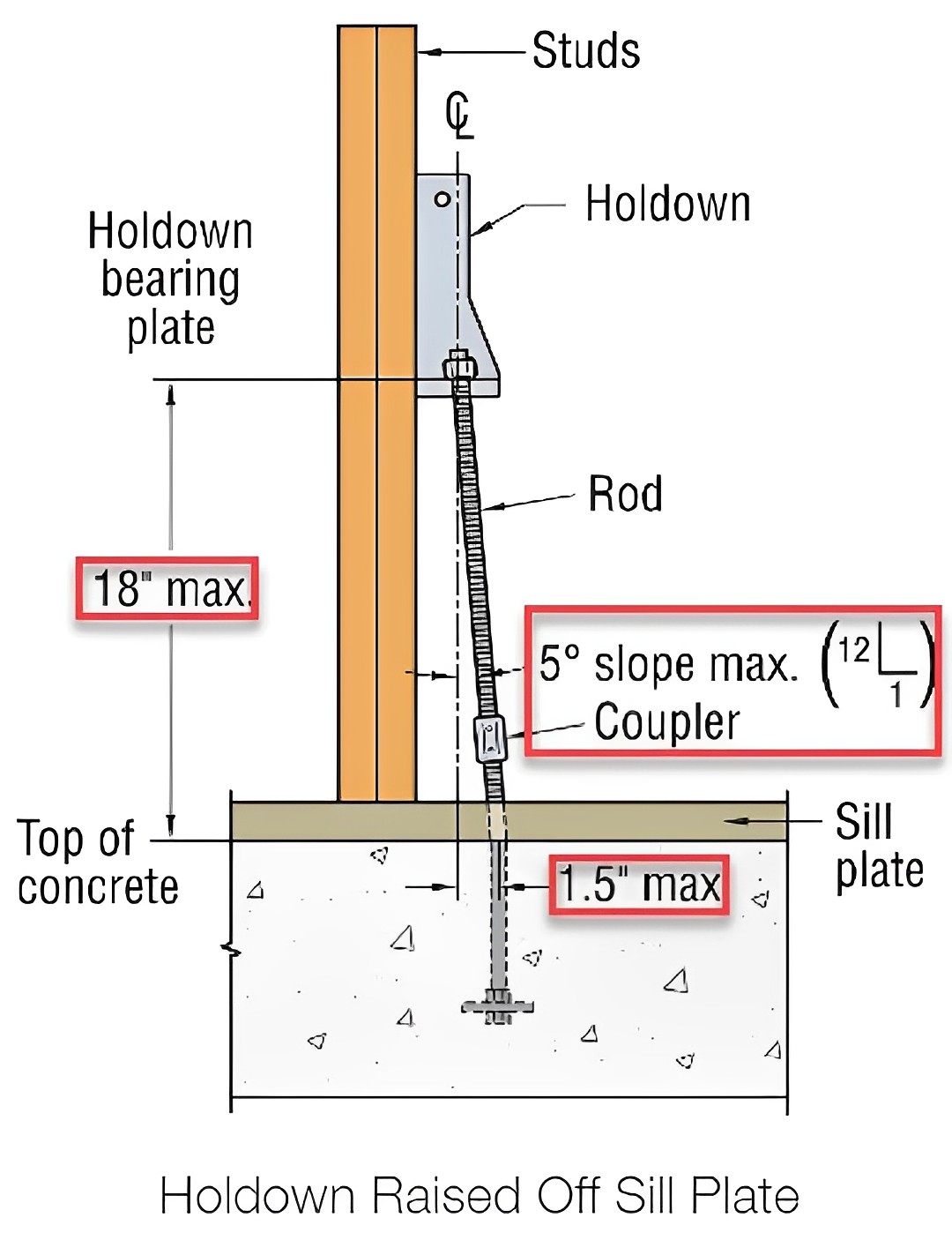
The height is measured from the top of concrete to the underside of the nut. The holddown can bear directly on the sill, but it is sometimes specified slightly raised because the designer doesn’t want the connector to come in contact with treated lumber, which could potentially be corrosive to steel. This potential depends on the chemical treatment of the lumber being used and on other environmental factors. Another reason to raise a holddown might be to account for construction variability, for example the anchor bolt is offset too far from the stud. Raising the holdown and using a coupler with rod extension will allow you to set the holdown back flush to the face of the wood member with no load reduction. Raising the holdown is limited to a maximum 1.5” offset of the anchor or a 5° slope. Anything beyond that would need to be evaluated by the Engineer of Record. Lastly, a holdown can also be raised as a possible fix when the anchor is set too low. Seems counterintuitive right? This is a solution when the threads of the anchor do not protrude high enough above the sill to get full thread engagement into the nut. Keep in mind that this solution requires enough threads above the concrete to allow full thread penetration past the witness hole in the coupler nut.
The second most common connector question we receive is:
“What is the minimum joist hanger height?”
We recommend that the hanger be at least 60% of the depth (D min) of the joist to provide stability before sheathing is installed which will help in resisting rotation.
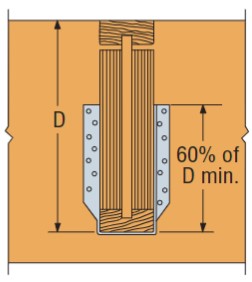
If the hanger is less than 60% of the joist height, you will want to add clips or blocking near the top to resist such rotation.
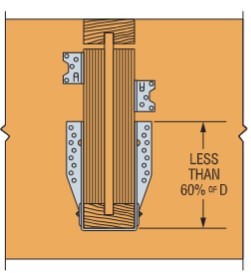
If you ever need documentation to support this, you can find it on p. 19, note m., and on page 95 of our C-C-2021 connector catalog.
The third most common connector product question we receive is:
“Can I modify a connector?”
Unless otherwise stated, a connector that has not been engineered and manufactured to be field bent, skewed or receive any other type of modification, must not be altered in any way. Examples of this would be bending side flanges straight on an HU hanger to accommodate an edge condition; flattening A35 clips; and drilling additional holes into a CC/CCQ column cap. Modifications can be specified only by a qualified designer and would void any warranty or published values stated in our load tables. For further information, please refer to our Terms and Condition of Sale in the general notes section on p. 16 of our C-C-2021 connector catalog.
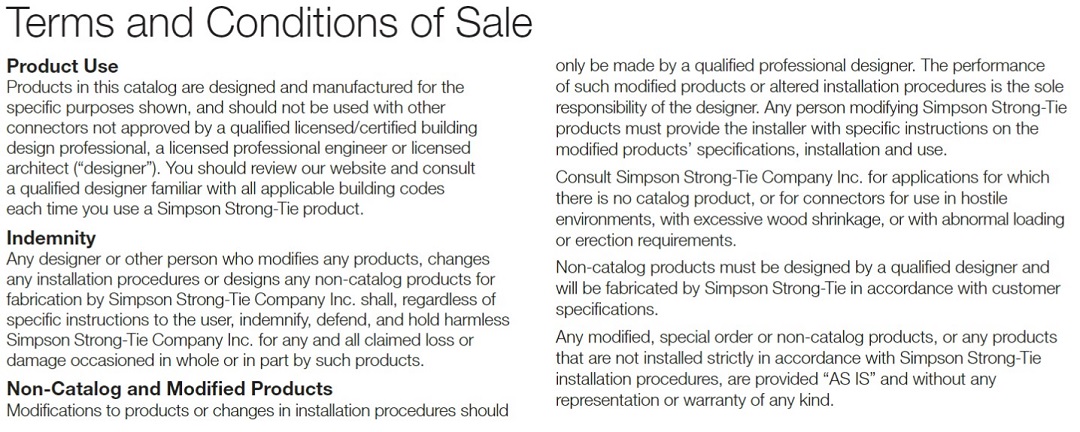
The fourth most common connector question we receive is:
“Can the connector be hot dipped galvanized (HDG)?”
The answer to this question can’t be found in our literature, but, yes, it can be done if the connector you reference is at least 14-gauge raw steel or thicker. In these situations, it might be best to call us first to confirm, but most connectors that meet the minimum steel thickness can be hot dipped galvanized to provide additional corrosion resistance without a negative impact on the load capacity of the connection. Please note that there is approximately a two-week lead-time for products sent out to the galvanizer, so please plan accordingly. As in every case, always make sure to use fasteners with appropriate coating to provide equivalent corrosion resistance compatible with the connector finish. For additional corrosion information on connectors and fasteners, please refer to the General Corrosion Information section of our site.
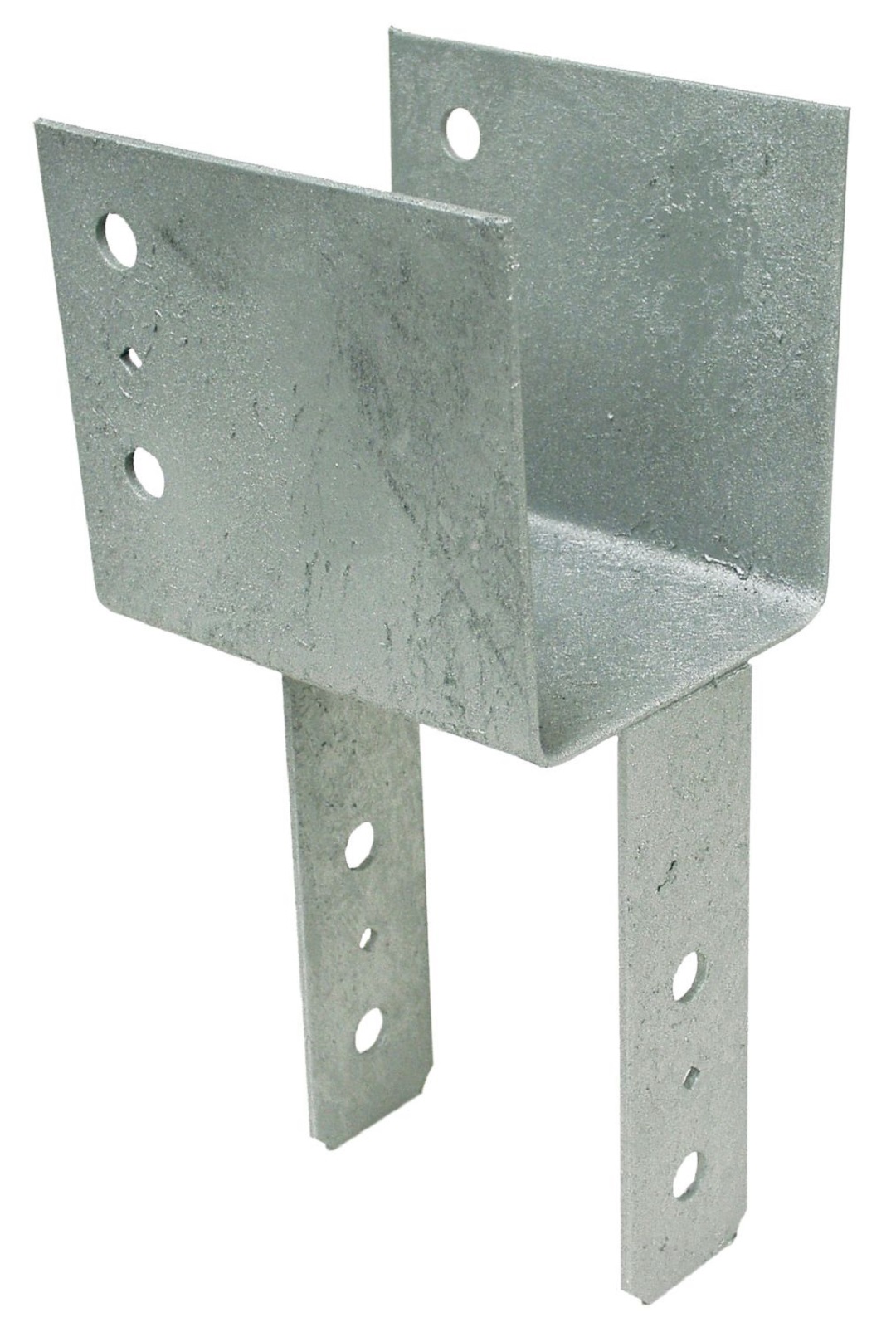
I sincerely hope you continue to find this information helpful. The information in this blog is current as of the day I write it, but because our company is constantly reevaluating and refining our products and processes, never hesitate to call us for the latest information.
For the last part of this series, I will be covering common fastener-related inquiries. Thank you, and please stay tuned.


